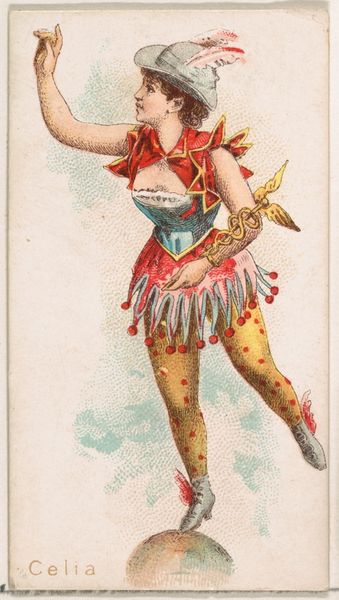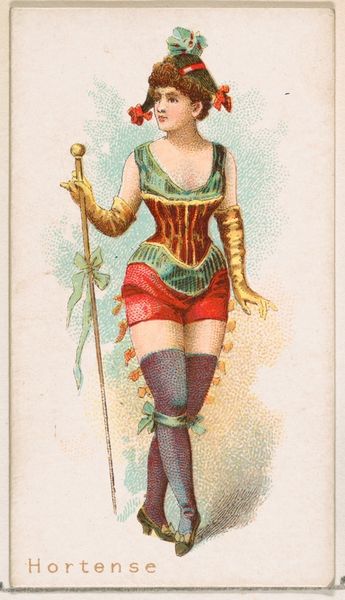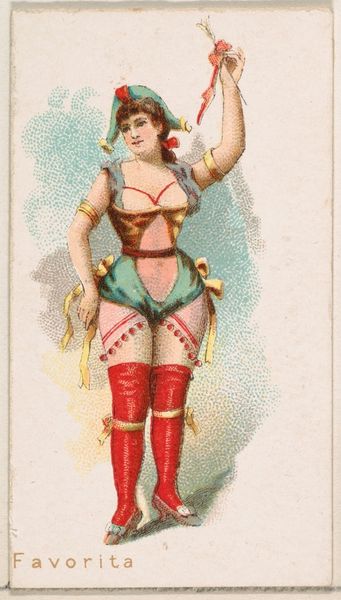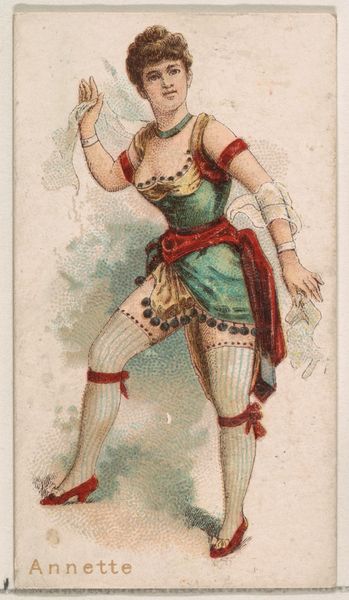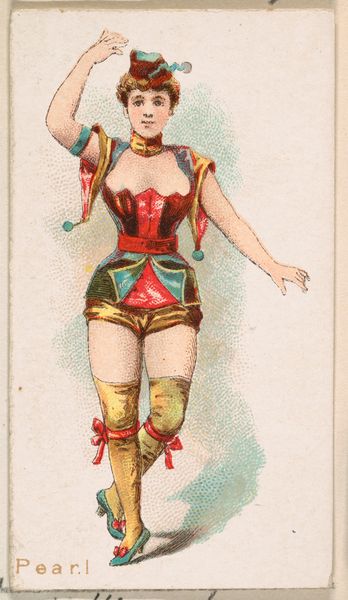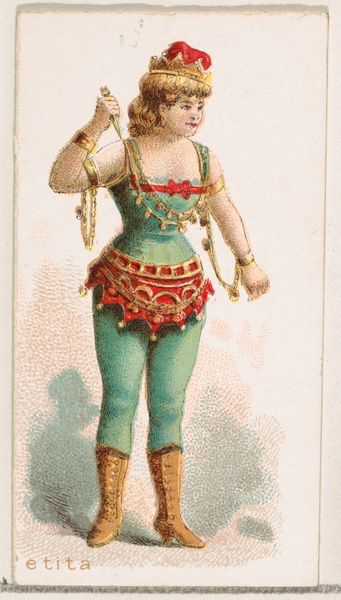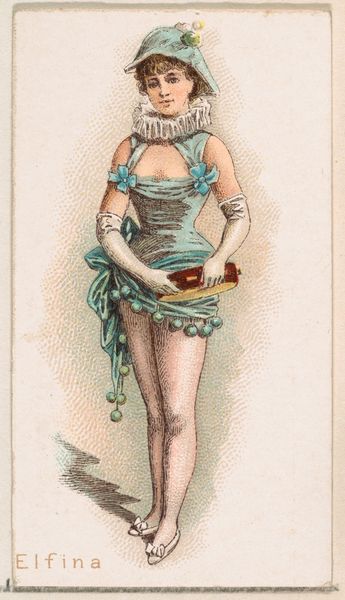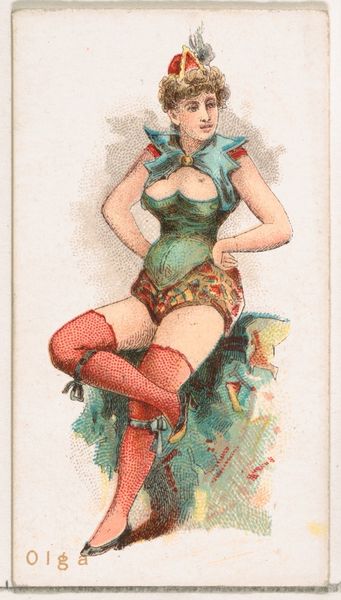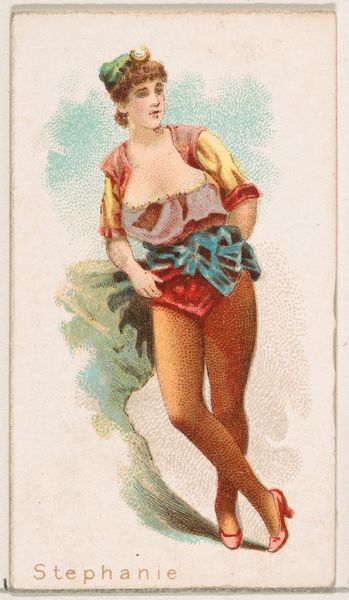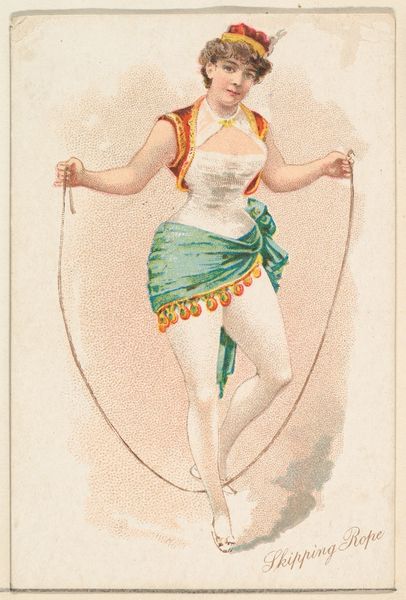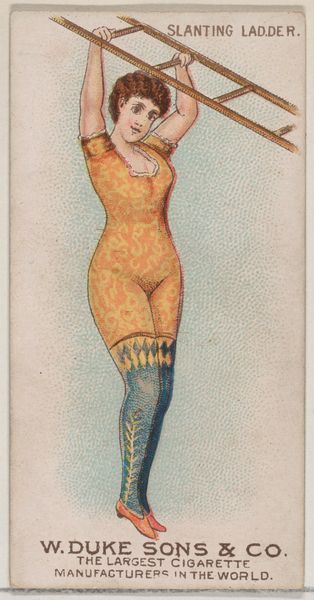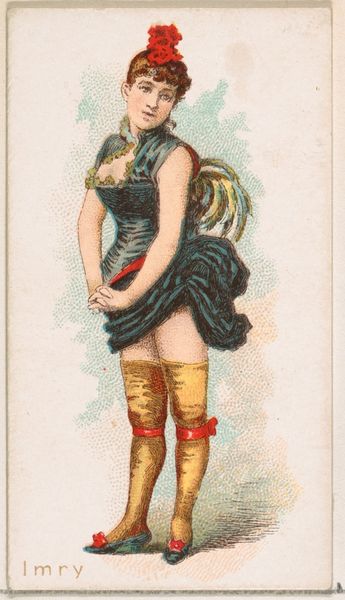
Gabrielle, from the Ballet Queens series (N182) issued by Wm. S. Kimball & Co. 1889
0:00
0:00
Dimensions: Sheet: 2 3/4 × 1 1/2 in. (7 × 3.8 cm)
Copyright: Public Domain
Editor: We’re looking at “Gabrielle, from the Ballet Queens series” by William S. Kimball & Co., printed in 1889. It seems so...staged, almost theatrical. I’m getting a real Vaudeville vibe from the image's bright colours and the pose, like a playful jab at idealized beauty. What jumps out at you when you see it? Curator: You know, "staged" is a delicious way to put it. To me, it's like a little portal back to a time obsessed with image and performance, and how even common items like cigarette cards became tiny stages. I can almost smell the sawdust and hear the slightly out-of-tune orchestra. Don’t you find it curious how these "Ballet Queens" were marketed? Were they truly celebrating talent, or just bodies? What does that dissonance suggest to you? Editor: Hmmm, interesting! I never thought about the conflicting nature of their market appeal and actual celebration of their talent. So, it sounds like this image isn't *just* a portrait; it is also like a window into the era’s complicated values. Curator: Precisely! It's a tightrope walk between admiration and commodification, wouldn't you agree? And think about it: someone decided this dancer was worth immortalizing – or at least, selling cigarettes with! The ephemerality of the print against the intended lasting power of a "portrait" is rather ironic, don’t you think? It gives me a delightful, bittersweet sort of chuckle, I must say! Editor: I see what you mean. It’s like a fleeting moment captured, reproduced en masse, then scattered to the winds. A very human paradox. This conversation makes me want to research what it was like to be a performer at the time. Curator: Absolutely! It is that "Gabrielle's" story likely goes far beyond this printed image. Isn’t that always the delicious pull of art?
Comments
No comments
Be the first to comment and join the conversation on the ultimate creative platform.
